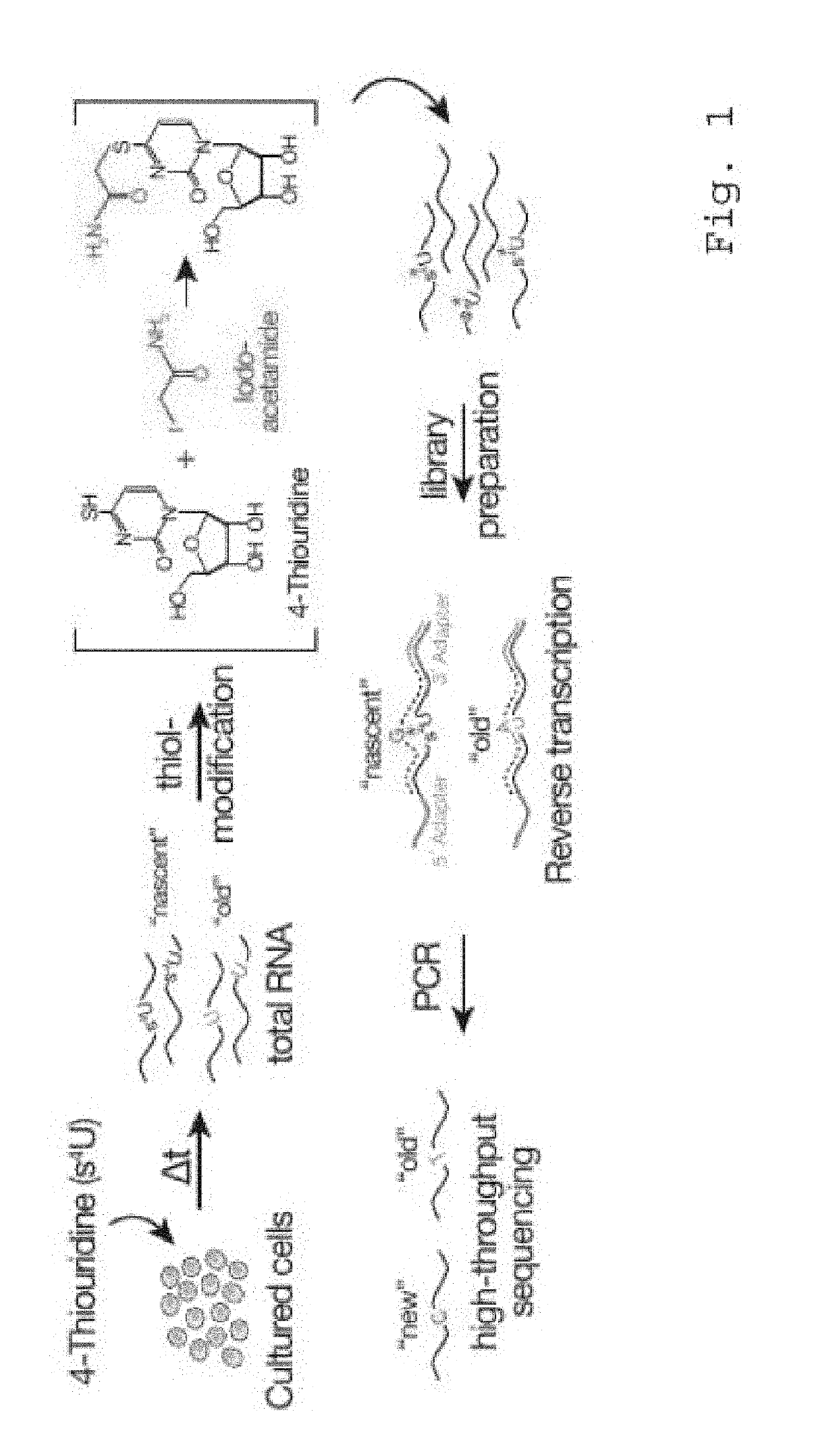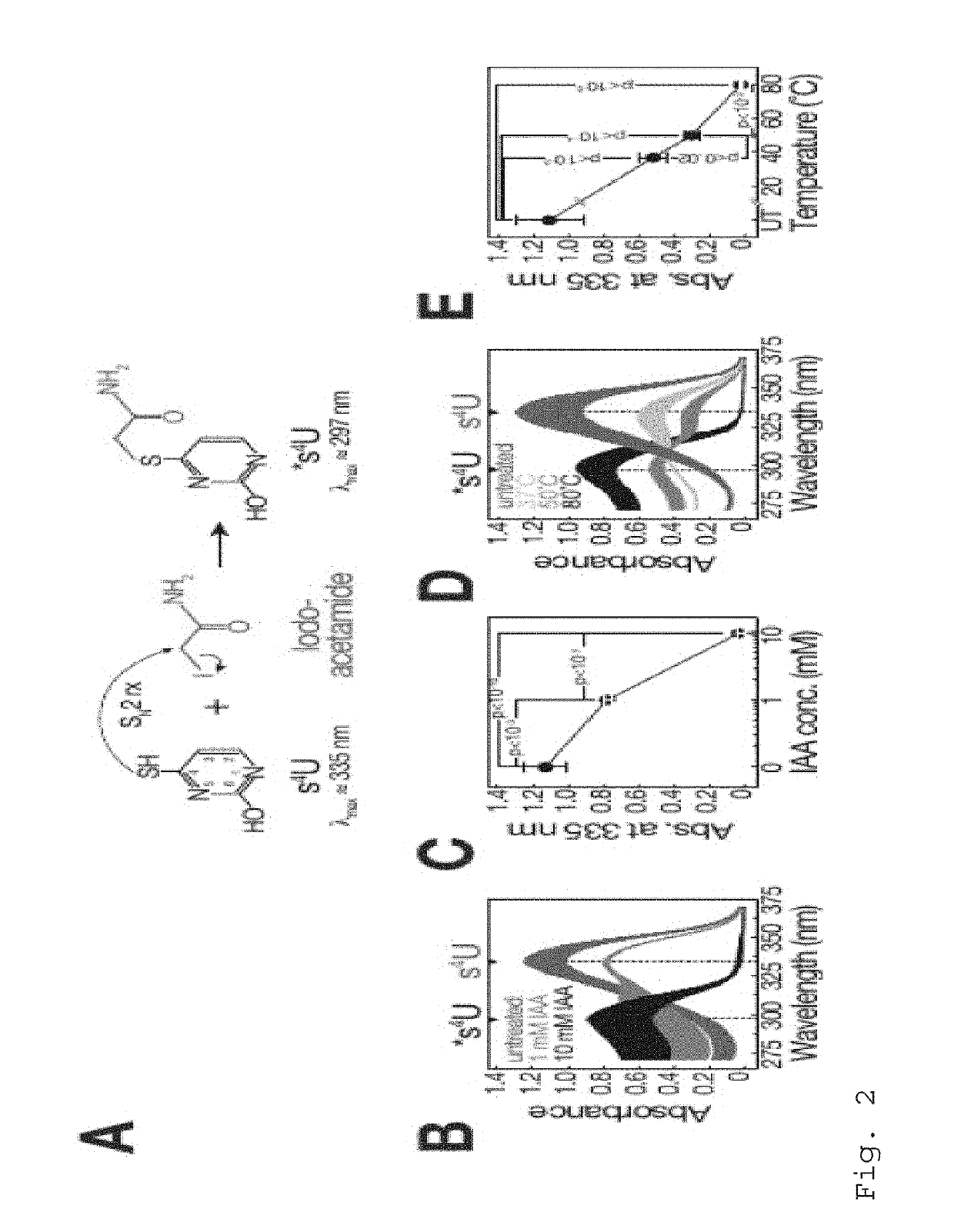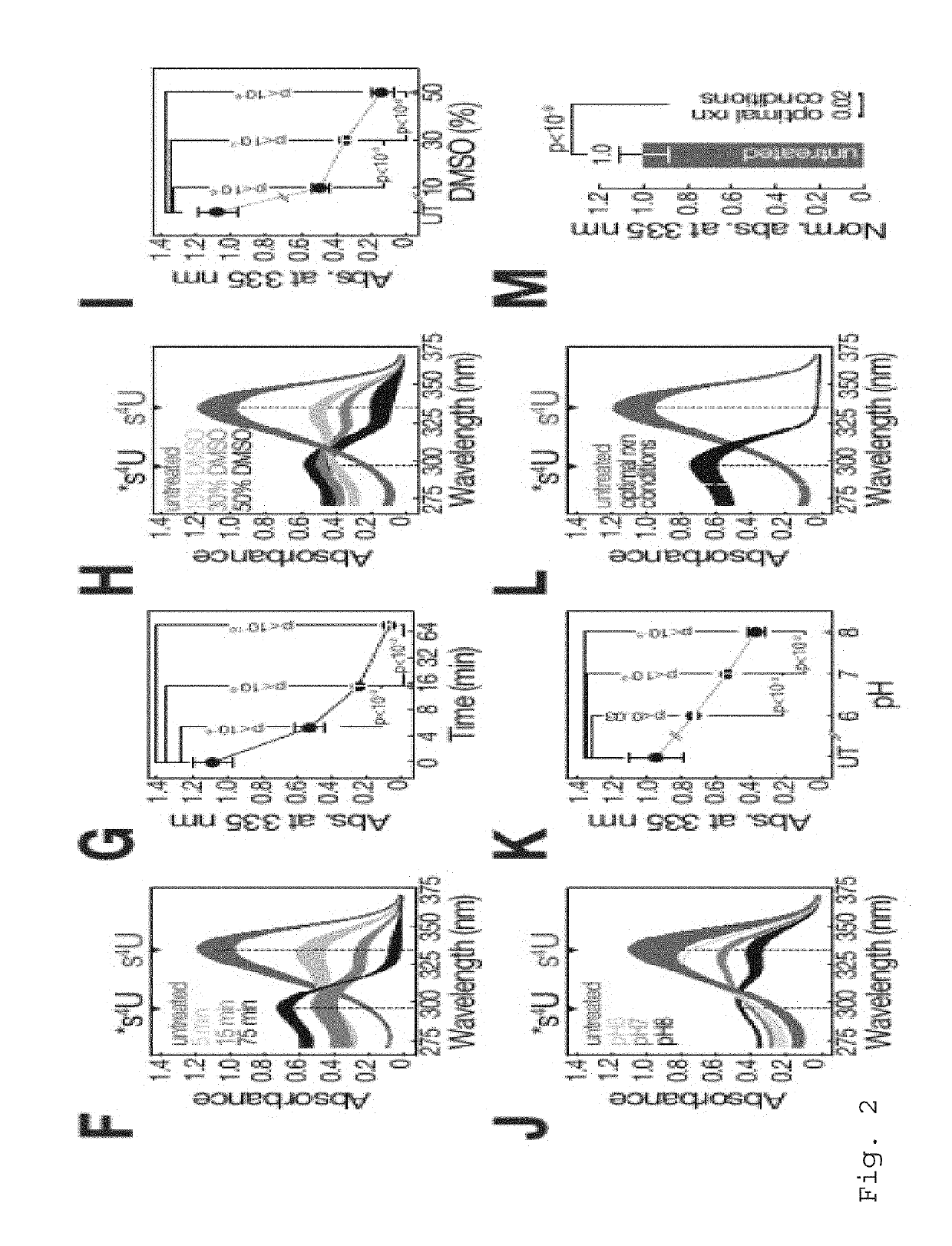Nucleic acid modification and identification method
- Summary
- Abstract
- Description
- Claims
- Application Information
AI Technical Summary
Benefits of technology
Problems solved by technology
Method used
Image
Examples
example 1
and Methods
Carboxyamidomethylation of s4U
[0113]If not indicated otherwise, carboxyamidomethylation was performed under standard conditions (50% DMSO, 10 mM iodoacetamide, 50 mM sodiumphosphate buffer pH8, for 15 min at 50° C.) using either 1 mM 4-thiouracil (SIGMA), 800 μM 4-thiouridine (SIGMA), or 5-50 μg total RNA prepared from s4U metabolic labeling experiments. The reaction was quenched by addition of excess DTT.
Adsorption Measurements
[0114]1 mM 4-thiouracil was incubated under optimal reaction conditions (10 mM iodoacetamide, 50% DMSO, 50 mM sodiumphosphate buffer pH8, for 15 min at 50° C.) if not indicated otherwise. Reaction was quenched by the addition of 100 mM DTT and adsorption spectra were measured on a Nanodrop 2000 instrument (Thermo Fisher Scientific), followed by baseline subtraction of adsorption at 400 nm.
Mass Spectrometry
[0115]40 nmol 4-thiouridine or 6-thioguanosine were reacted in the absence or presence of 0.05, 0.25, 0.5 or 5 μmol iodoacetamide under standard ...
example 2
ked Alkylation for the Metabolic Sequencing of RNA
[0129]As proof-of-principle thiol nucleotide-analog was selected as example of a derivatization strategy that bypasses the need for biochemical separation of s4U- or s6G-labeled and unlabeled RNA species to determine RNA expression kinetics in cultured cells (FIG. 1): This strategy is based on well-established metabolic labeling approaches but avoids the ineffective and time-consuming biotinylation-step. It contains a short chemical treatment protocol that involves the modification of s4U-containing RNA with iodoacetamide, a sulfhydryl-reactive compound, which—upon reaction with s4U or s6G—creates a bulky group at the base-pairing interface (FIG. 1). When combined with well-established RNA library preparation protocols, the presence of the bulky group at the sites of s4U-incorporation leads to the specific and quantitative misincorporation of G during reverse transcription (RT), but does not interfere with RT-processivity. s4U- or s6...
example 3
tions of Modified Nucleotides in Metabolically Labeled mRNA in mES Cells
[0134]We tested the ability of mouse embryonic stem cells to tolerate s4U metabolic RNA-labeling after 12 h or 24 h at varying s4U concentrations (FIG. 6A). As reported previously, high concentrations of s4U compromised cell viability with an EC50 of 3.1 mM or 380 μM after 12 h or 24 h labeling, respectively (FIG. 6A). Hence, we employed labeling conditions of 100 μM s4U, which did not severely affect cell viability. Under these conditions, we detected a steady increase in s4U-incorporation in total RNA preparation 3 h, 6 h, 12 h, and 24 h post labeling, as well as a steady decrease 3 h, 6 h, 12 h, and 24 h after uridine chase (FIG. 6B). As expected, the incorporation follows a single exponential kinetics, with a maximum average incorporation of 1.78% s4U, corresponding to one s4U incorporation in every 56 uridines in total RNA (FIG. 6C). These experiments establish s4U-labeling conditions in mES cells, which ca...
PUM
| Property | Measurement | Unit |
|---|---|---|
| Concentration | aaaaa | aaaaa |
| Hydrogen bonding enthalpy | aaaaa | aaaaa |
Abstract
Description
Claims
Application Information
 Login to View More
Login to View More - R&D
- Intellectual Property
- Life Sciences
- Materials
- Tech Scout
- Unparalleled Data Quality
- Higher Quality Content
- 60% Fewer Hallucinations
Browse by: Latest US Patents, China's latest patents, Technical Efficacy Thesaurus, Application Domain, Technology Topic, Popular Technical Reports.
© 2025 PatSnap. All rights reserved.Legal|Privacy policy|Modern Slavery Act Transparency Statement|Sitemap|About US| Contact US: help@patsnap.com



